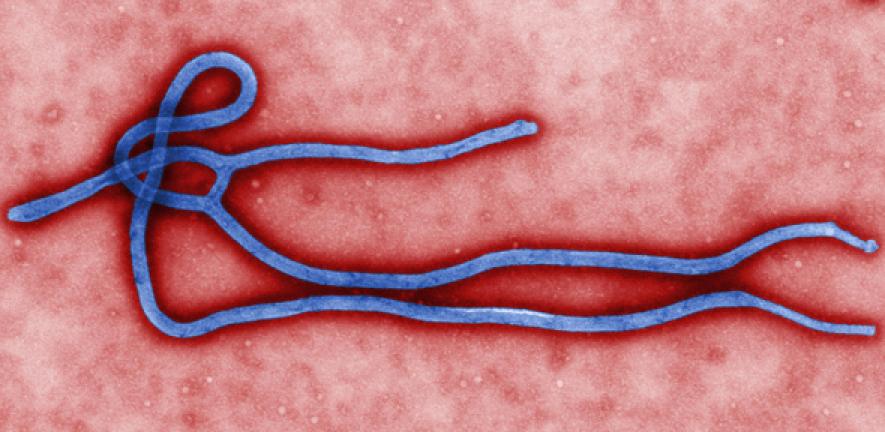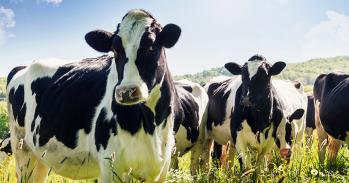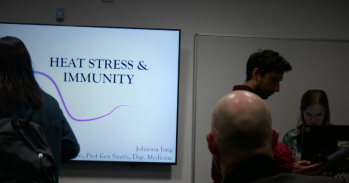
A team of scientists, part of the international effort to curb further spread of the Ebola virus in Sierra Leone, has released its first dataset of the virus’ genetic structure online. The dataset will allow the global scientific community to monitor the pathogen’s evolution in real-time and conduct research that can lead to more effective strategies against further outbreaks.
A team of scientists, part of the international effort to curb further spread of the Ebola virus in Sierra Leone, has released its first dataset of the virus’ genetic structure online. The dataset will allow the global scientific community to monitor the pathogen’s evolution in real-time and conduct research that can lead to more effective strategies against further outbreaks.
Only by understanding the Ebola virus and other pathogens, which cause so much suffering in countries like Sierra Leone, can we take meaningful steps to protect communities from future outbreaks
Ian Goodfellow
The team of British scientists, funded by the Wellcome Trust, is using semi-conductor next-generation sequencing technology developed by Thermo Fisher Scientific to generate data in a lab facilitated by Public Health England and International Medical Corps. The genetic analysis is being made freely available to the scientific community.
Since the first reported case in March 2014, the Ebola outbreak has claimed nearly 11,000 lives in West African countries. Professor Ian Goodfellow, Head of Virology at the University of Cambridge, travelled to Sierra Leone in December last year and then again in March this year to help set up a new diagnostics centre attached to an Ebola Treatment Centre in one of the country’s worst affected parts. He returned a third time, together with his postdoc Dr Armando Arias, to study the virus at a molecular level using the sequencing technology.
“Sequencing the genome of a virus can tell us a lot about how it spreads and changes as it passes from person to person. While this information is invaluable to researchers, the rapid sharing of data does not always occur,” said Professor Paul Kellam at the Wellcome Trust Sanger Institute, who is leading the team to map the genomic data captured by Professof Goodfellow and colleagues. “It used to take months to process samples that had to be brought back to labs in the UK for analysis. Having sequencing capabilities on the ground helps generate data in a matter of days or at the longest weeks, which should have a profound impact on how the Ebola virus is researched and inevitably addressed on a global scale.”
Rapid sequencing enables epidemiologists to decipher the source of individual strains, and helps eliminate the need to rely upon Ebola patients to tell them how and where they contracted the virus, as different strains can be tracked as they are transmitted from person to person.
“Only by understanding the Ebola virus and other pathogens, which cause so much suffering in countries like Sierra Leone, can we take meaningful steps to protect communities from future outbreaks,” said Goodfellow. “My hope is that this technology will be used by the next generation of Sierra Leonean scientists and researchers to help provide a sustainable research and surveillance system in the future.”
The next-generation sequencing system was installed at the laboratory adjacent to an Ebola Treatment Centre in Makeni, which was funded by the UK’s Department for International Development. In order to ensure a lasting benefit for the project beyond the current crisis, the next-generation sequencing system is expected to be installed at the University of Makeni, where it will be used by local scientists to study Ebola, and other pathogens that affect the region.
“We’ve learned many painful lessons from the Ebola outbreak, not least of which is that as a scientific community we must become less secretive with the data that is generated,” added Dr Jeremy Farrar, Director of the Wellcome Trust. “The collective expertise of the world’s infectious disease experts is more powerful than any single lab, and the best way of tapping into this is to enhance the capacity to generate the data in the countries affected, rather than having to fly samples out to other countries and then to make the data openly and safely available, as soon as possible.”
Adapted from a press release from Thermo Fisher Scientific, USA

The text in this work is licensed under a Creative Commons Attribution 4.0 International License. For image use please see separate credits above.




